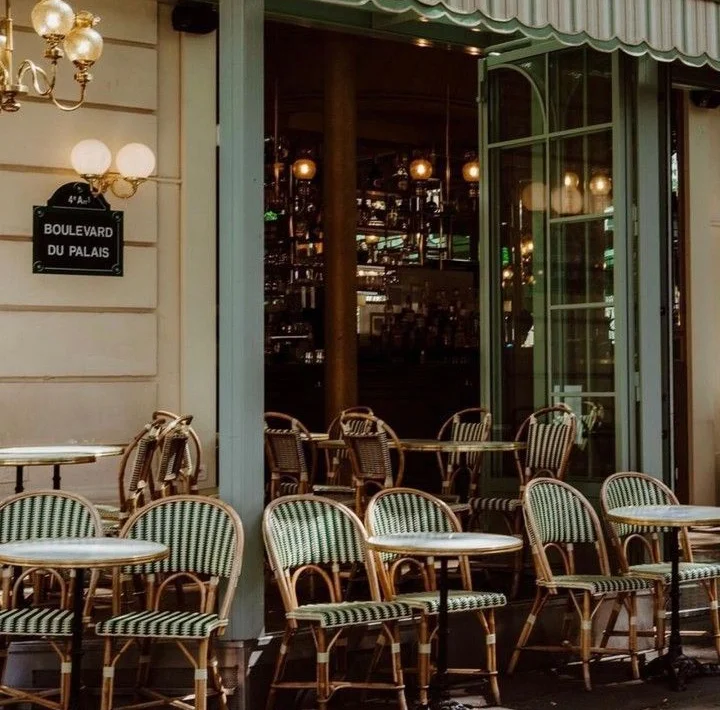Here is the authentic canelé recipe! The canelé (pronounced “can-eh-lay”) is one of my favorite French pastries! In case you’re not familiar with this specialty of the Bordeaux region of France, a canelé is a small French pastry flavored with rum and vanilla. It takes the shape of a small, striated cylinder up to five centimeters in height with a depression at the top. And it has a soft and tender custard center and a dark, thick caramelized crust.
Canelés are so delicious! The smell and taste of dark caramel come with a pleasant, subtle bitterness. The butter-colored interior has the texture of thick pastry cream. It tastes gently sweet and milky with a hint of rum.
Canelés can be quite challenging to make, requiring patience, practice, and a good French canelé recipe. Here is everything you need to know, to make the perfect canelés with a deeply caramelized crust and a soft, tender interior.
A brief history of the canelé
The story tells that it was in the 17th century in the heart of Bordeaux, in the Faubourg Saint-Seurin, that the first canauliers —artisans who specialized in baking— made the canaules, the ancestors of canelés. The recipe was simple: flour and egg yolks. They were so popular that there were 39 canauliers in 1785!
It was not until the beginning of the 20th century that an inspired pastry chef gave it the typical Doric shape of the Grand Théâtre de Bordeaux columns. He created the 12-flute mold and improved the recipe by adding rum and vanilla. The canaules then became the canelés that we know today with their distinguishable brown color obtained by the caramelization effect of the dough in contact with the mold.
Since the 1980s, the canelé has become one of the symbols of Bordeaux’s delicacies and it can be found in the best pastry shops in Bordeaux.
Canelé or cannelé?
The modern name “canelé” is of recent origin. Only in 1985, after the pastry’s popularity had begun to explode, was the Brotherhood of the Canelé of Bordeaux (Confrérie du Canelé de Bordeaux) created and the second “n” of its name removed. The name canelé became a collective brand registered with the National Institute of Industrial Property of France by the Brotherhood.
The best canelé molds


Canelés are traditionally baked in tinned copper molds. Indeed, as the copper canelé molds conduct heat much better than their silicone counterpart, the canelés are crusty and caramelized on the outside, and soft on the inside. That’s why I’ll recommend not wasting any money on silicone and aluminum molds and immediately going for the copper canelé molds.
Being French, I like to follow French cooking traditions religiously, that’s why I haven’t tried using anything other than copper molds. I invested in a set of six copper tinned Mauviel (5.5 cm) molds which are made in France and work incredibly well. The price is high but they will last a lifetime! I recommend also this set of copper tinned canelé molds by the French cookware brand de Buyer —they are made in France as well.
When properly seasoned you’ll have no sticking issues (in French we call it “le culottage”). Indeed, before using your new canelés copper molds, you need to season them: coat the inside of each one with a mix of butter and (edible) beeswax, bake on a tray for one hour at 390°F (200°C) with the open end facing up. Avoid cleaning the molds with any harsh abrasive or anything metal. After using them, just simply wipe your copper molds down with paper towels to ensure any burned-on crust is removed.
How long can you keep canelés?
In my opinion, canelés are the best the day they are baked. Although, some prefer them best a day old when the exterior has softened just a bit. You can keep them in the fridge for up to five days or in the freezer for up to two weeks.

The Authentic Canelé Bordelais Recipe
Ingredients
- 1 L milk
- 500 g sugar
- 2 whole Vanilla beans
- 50 g unsalted butter
- 2 eggs
- 6 egg yolks
- 250 g flour
- 15 cl rum
Instructions
- In a saucepan, bring the milk to a boil with half of the sugar and the split and scraped vanilla bean.
- Turn off the heat and add the butter.
- In a mixing bowl, gently whisk together the eggs, egg yolks and remaining sugar. Add the flour and stir to combine.
- Pour in the boiled milk/ sugar/ butter mixture.
- Add the Rum then strain through a fine mesh sieve and refrigerate for at least 24 hours.
- Brush the canelé molds with butter or a mix of butter and (edible) beeswax. And fill each mold 3/4 of the way up.
- Bake for 40 to 45 minutes in a relatively hot oven (180°), on a baking tray placed in the lower part of the oven.
- Unmolded the canelés when there are still hot.
Notes
Et voilà! I hope you’ll enjoy this French canelé recipe as much as I do! If you do this recipe let me know what you think in the comment section below. Bon appétit!
Disclaimer: I carefully select and personally love every product featured on Leonce Chenal. If you buy through my links, I may earn an affiliate commission at no extra cost to you. Merci for your support <3
Bonjour! I’m Léonce, the founder of Léonce Chenal, a blog dedicated to French fashion, beauty, and lifestyle. I’m French and launched Léonce Chenal in 2018 while working as a data analyst in London, inspired to share my love of effortless French style. After living in Paris, London, and Amsterdam, I’ve now settled in the beautiful city of Bordeaux. When I’m not writing, you’ll find me baking pâtisseries, exploring hidden museums, or on the hunt for the perfect perfume.





Hei I am a bit confused, is there different ways of making these, depending maybe of the area? some recipes has just egg yolks and other egg yolks + eggs? Thanks
Bonjour Leonce,
I recently bought copper canele molds but I am not sure how to initially season them properly. Some sites suggest filling the mold with edible beeswax and putting in the oven and others suggest just lining/spraying with beeswax and or butter mixture but not filling the mold for the initial seasoning.
What is your view on how best to do the initial seasoning of the moulds?
Kind regards
Maxine
Do you have problems with ballooning/muffin top when cooking with this method? I find I have to take the canele out of the oven several times to prevent this from happening. Do you have any suggestions?
yum! Will definitely try these. I’ve seen many recipes that call for beeswax and oil to prevent sticking. Will these unmold easily with just butter? Thanks – love your site!!
Bonjour Sandra, thank you very much for your comment! Yes, these unmold easily with just butter, but you can also use (edible) beeswax or a mix of butter/beeswax or oil/beeswax. It seems that beeswax gives a slight honey taste and an incomparable crispness, so if you have some, I recommend using it. I’m adding this comment to the recipe 🙂